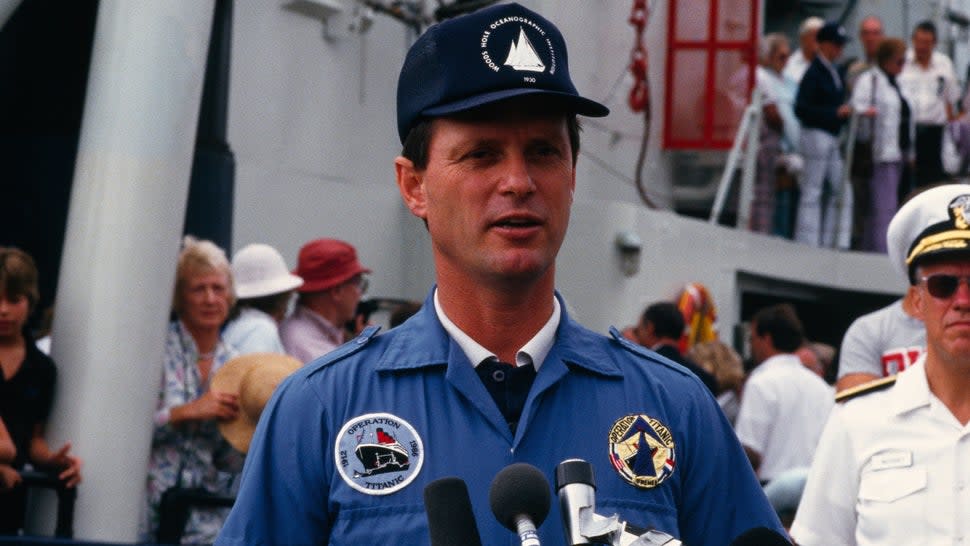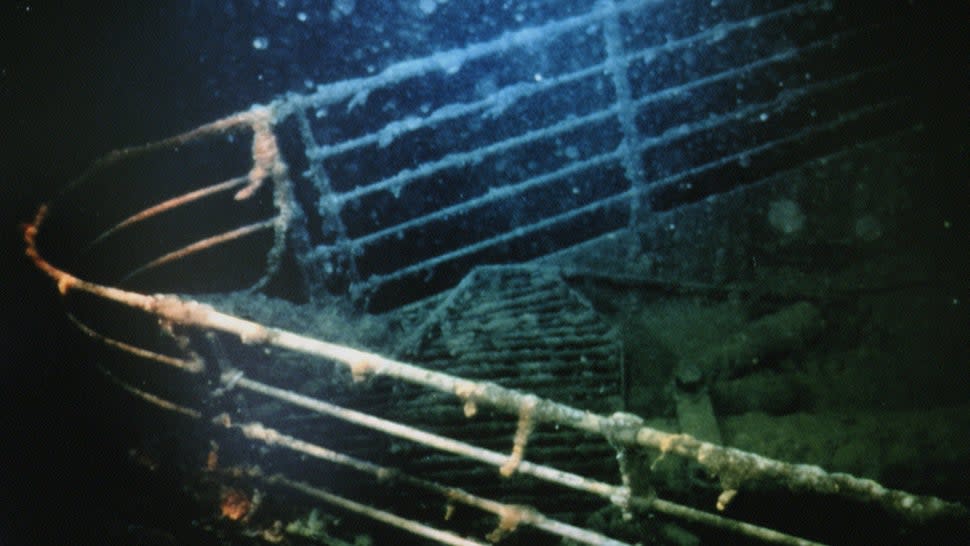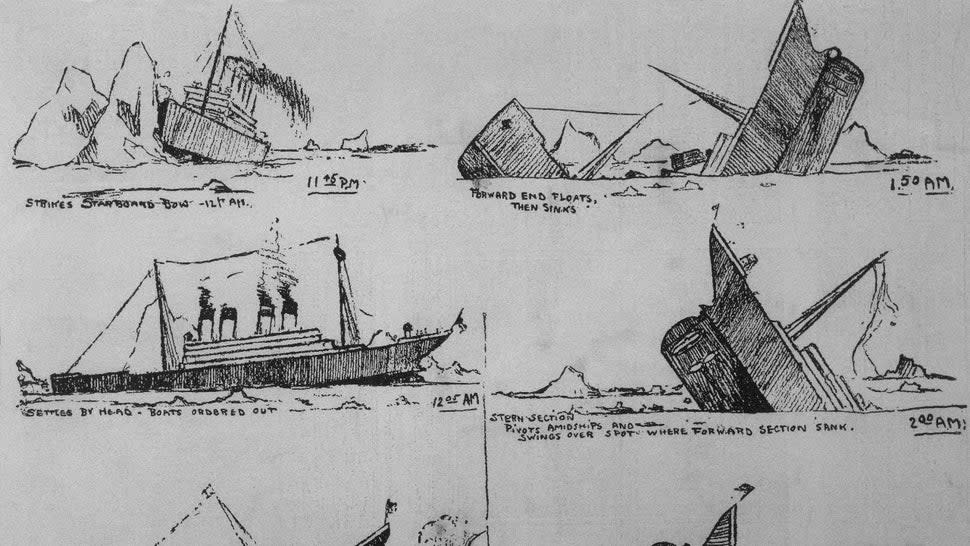Inside Titanic Wreckage's Discovery in 1985 and Explorer Bob Ballard's Early Submersible Vehicle (Flashback)
The Titanic’s wreckage two and a half miles below the Atlantic Ocean rested unseen by human contact for nearly 75 years, until Bob Ballard’s expedition discovered the infamous ocean liner’s remains in 1985. While manned-voyages to the ship’s final resting place has become a global conversation in the wake of the Titan submersible's "catastrophic implosion," there was enthusiasm around the world after the ocean explorer provided the first photos and footage of the Titanic’s underwater grave.
Speaking with ET in 1987, the Navy vet summed up his initial reaction to finding the Titanic in one word: "Relief."
"I had been pursuing that ship for 13 years," he explained. "It was like this big piece of pressure came off my back and I was glad."

After uncovering the ship via cameras that combed the ocean floor, Ballard and his team of researchers performed multiple five-hour roundtrip dives to the Titanic the following year. "It was a pretty tough commute," he remembered, saying that their vessel was "a very cold, cramped elevator" surrounded by 6,000 pounds of pressure that amounted to "a Cadillac car on every square inch of you."
Of course, those dangerous voyages yielded the world’s first look at the Titanic since it struck an iceberg on April 14, 1912 and 1,500 people died when it sank within hours early the next morning.
"It's a very peaceful site, actually. It's sort of like a gentle, alpine terrain. It's like a fresh snow has fallen, except it's gray or brownish," Ballard observed. "And the ship [sits] overlooking a canyon. Upright on the bottom. And it's very quiet. And there's a gentle current. A breeze blowing. It's very silent and totally dark."

According to Ballard, one of the most frequent questions being put to him at the time concerned the presence of skeletal remains in the debris field, which he explained wasn’t possible nearly 12,600 feet below the ocean's surface. "Fortunately, the sea is very forgiving like that. It removes all remains. Even bones are gone,” he said.
Stepson of Titanic Sub Victim Shares Alleged DM From Travis Barker Hours Before Debris Was Found
This video is unavailable because we were unable to load a message from our sponsors.
If you are using ad-blocking software, please disable it and reload the page.
Up Next
Stepson of Titanic Sub Victim Shares Alleged DM From Travis Barker Hours Before Debris Was Found
Before later expeditions would illuminate additional insights about the sinking's timeline, Ballard and his team’s efforts immediately put several Titanic myths to rest, including the state of the ship as it disappeared into the Atlantic's depths. With the wreck site divided into two main sections that faced in opposite directions, one of the biggest revelations was a definitive conclusion to the debate over if the ship sank in one piece or broke in half on the surface first.
"That's always been some of the controversy," Ballard noted. From A Night to Remember to Raise the Titanic -- and even Ghostbusters II, which hit theaters four years after Ballard’s discovery -- the Titanic sank to the ocean floor relatively intact as far as pop culture was concerned.
Ballard pointed out, however, there was already a fair share of accurate eyewitness descriptions, citing the account of first-class passenger Jack Thayer. The survivor’s recollection of the night’s events inspired a now-famous depiction of the ship’s final moments (see below), which was validated by the shipwreck’s discovery over 70 years later.

"Clearly, the Titanic did not arrive on the bottom in one piece. That was a popular version," Ballard said. "The reason we know that that couldn't have happened is that the two major pieces, the bow and the stern, are over 600 yards away from one another."
Titanic literacy received an enormous uptick in 1997, following James Cameron’s detail-oriented blockbuster epic. The movie's director and Ballard came together in the aftermath of the Titan’s catastrophic tragedy, sharing their reaction to the deaths of all five people aboard the OceanGate submersible.
"What is the lesson of Titanic?" Cameron posited during their discussion with National Geographic. "Heed the warnings. Do not let greed and arrogance supersede your best judgment. I mean, the captain of Titanic was highly seasoned, highly respected, and yet he didn't heed the warnings and he steamed full speed into an ice field on a moonless night. And 1,500 lives were forfeited as a result. That's the lesson."
Ballard concurred. "If you don't study history, you’re doomed to repeat it."
RELATED CONTENT:
Lew Palter, 'Titanic' Actor and Beloved Theater Teacher, Dead at 94
Why 'Simpsons' Fans Think the Show Predicted OceanGate Titanic Sub Tragedy 17 Years Ago
OceanGate CEO Who Died in Titan Submersible Had Real-Life Connection to Titanic
